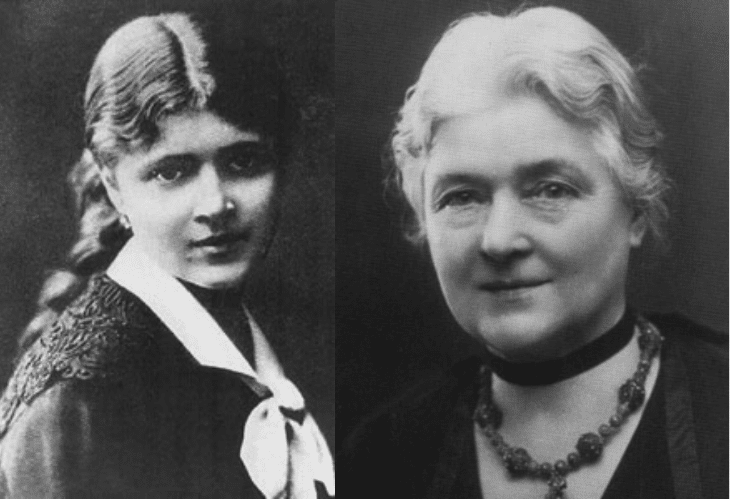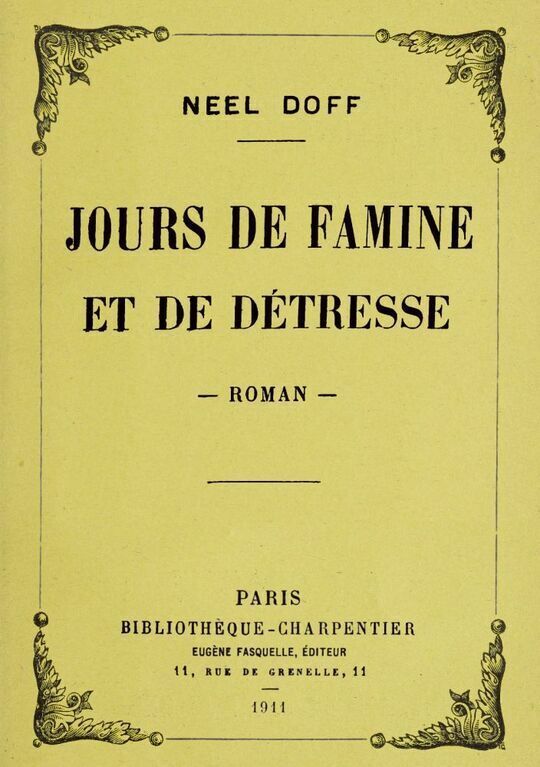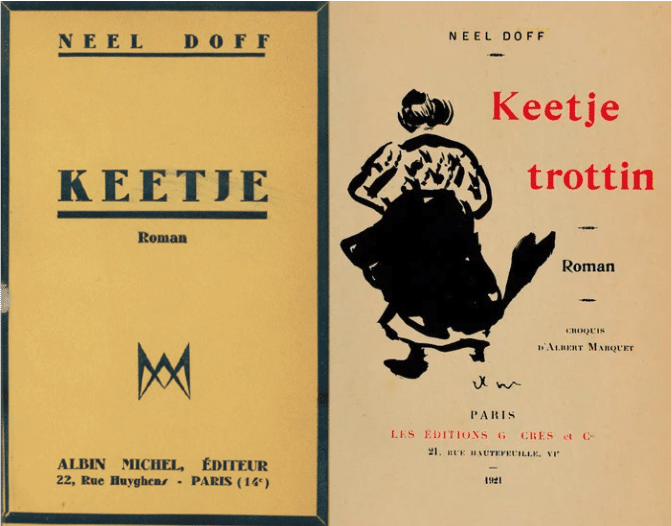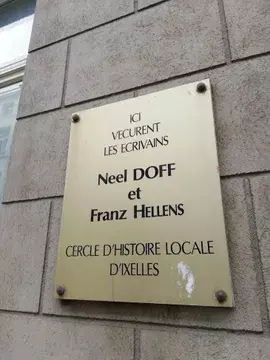The Elsene History Society in Brussels has put up a bronze plaque at Napelsstraat 36 to mark the townhouse where the writers Neel Doff and Franz Hellens once lived. It suggests they lived there together, but the story is more complicated.
Neel Doff was a striking Dutch woman born in 1858 into a poor family of nine children. She was forced to work as a child prostitute in Amsterdam to support her family. In 1874, she moved to Antwerp and then on to Brussels the following year.
 Neel Doff (1858-1942) as a young and an older woman.
Neel Doff (1858-1942) as a young and an older woman.© Wikipedia
Here she earned a living by posing for Belgian artists and sculptors including James Ensor and Félicien Rops. At the age of 20, she sat for Charles de Coster, who was working on a sculpture based on the Uilenspiel legend. The romantic work now stands next to a pond on the Flageyplein in Elsene.
Doff went on to marry Fernand Brouez, a Belgian intellectual who paid for her to study French and drama. She became fluent enough in French to translate several works by Multatuli. When Brouez died, she remarried an Antwerp lawyer and moved into a grand townhouse in Antwerp.

Doff finally became a writer at the age of 51, publishing several realistic novels based on her brutal Amsterdam childhood. Her first semi-autobiographical novel, Jours de famine et de détresse, or Days of Hunger and Distress, told the story of a young girl in Amsterdam named Keetje Oldema who was forced to turn to prostitution to save her family from starvation.
Doff apparently began the novel after she saw some poor children in a street in Antwerp playing in the snow. It brought back memories of her squalid childhood in Amsterdam.

Her most famous work, Keetje, was published in 1919, followed by Keetje Trottin in 1921. She fell ill during the German Occupation and died in the house in Napelsstraat on 14 July 1942.
 Bronze plaque at Napelsstraat 36, Brussels to mark the townhouse where the writers Neel Doff and Franz Hellens once lived.
Bronze plaque at Napelsstraat 36, Brussels to mark the townhouse where the writers Neel Doff and Franz Hellens once lived.In her will, Doff bequeathed the house to her friend Franz Hellens, a Belgian writer, who lived there until his death in 1972. His literary friends included Vladimir Nabokov, who described him as: ‘a tall, lean, quiet, very dignified man of whom I saw a good deal in Belgium in the mid-thirties when I was reading my own stuff in lecture halls for large emigré audiences…It is a shame that he is read less than that awful Monsieur Camus and even more awful Monsieur Sartre.’
Neel Doff’s novels were almost forgotten until 1975 when Dutch director Paul Verhoeven brought out a film titled Keetje Tippel, released in English as Katie Tippel, with Monique Van de Ven as Keetje and Rutger Hauer as her lover.












